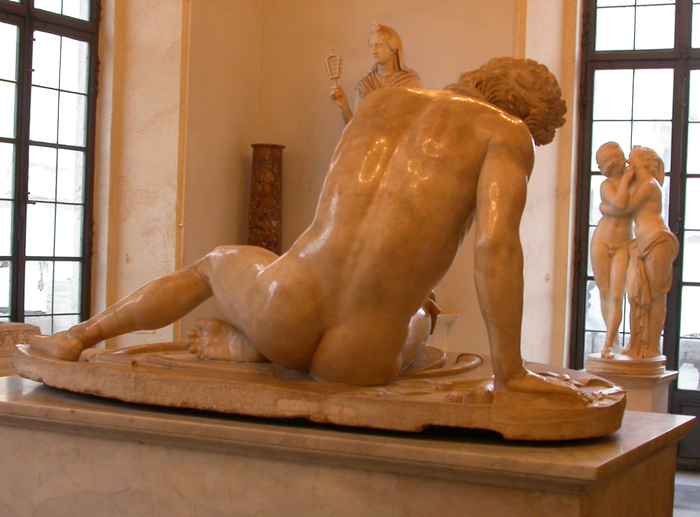
This is another Wiki worthy statue: the Dying Gaul. It is a remarkable statue in many ways: It depicts a Gallic warrior at the moment of his defeat. What was thought of as Gaul in Roman times is now what we think of as the Celtic lands.

This is another Wiki worthy statue: the Dying Gaul. It is a remarkable statue in many ways: It depicts a Gallic warrior at the moment of his defeat. What was thought of as Gaul in Roman times is now what we think of as the Celtic lands.
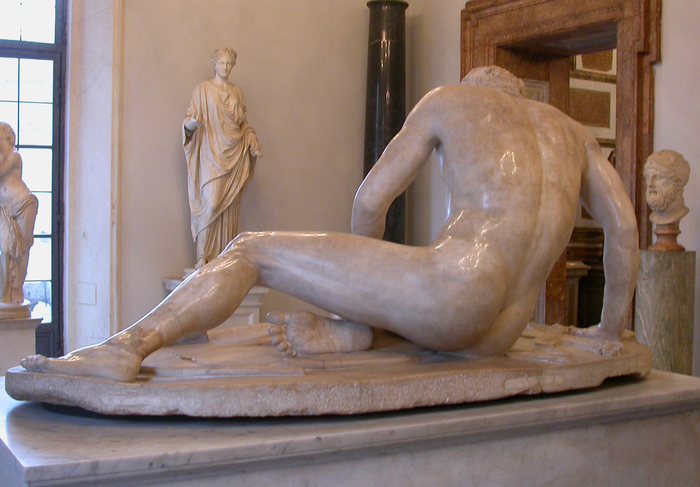
This statue supports the rumor that the Celts fought in the nude. The Gaul is completely naked except for the torc around his neck.
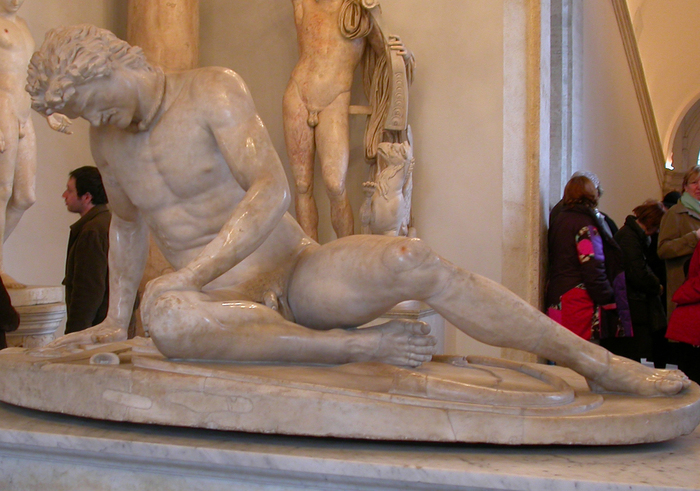
The original was probably a bronze from around 220 BC. I have not found a date for this particular copy, although it was found in the Gardens of Caesar. The torc appears frequently on Celtic people, from the earliest known sculpture of a human being north of the Alps (Warrior of Hirschlanden, c. 500 BC) to modern images of Celtic gods and goddesses. Several torcs from Gaulish times have survived - they are made of intertwined metal strands, open at the front, and often incorperate images of animals. Its meaning to the ancient Celts is often debated, but most likely it was simply a decoration.
The other interesting thing about the Gaul is that it is a rare example of the Romans displaying some empathy for those that they have conquored. Many depictions of Rome's vanquished show them cowering in fear or simply falling before the inevitable victory
of the Romans. The Gaul is mortally wounded but not yet defeated in spirit - he struggles to stay upright even as death takes him.
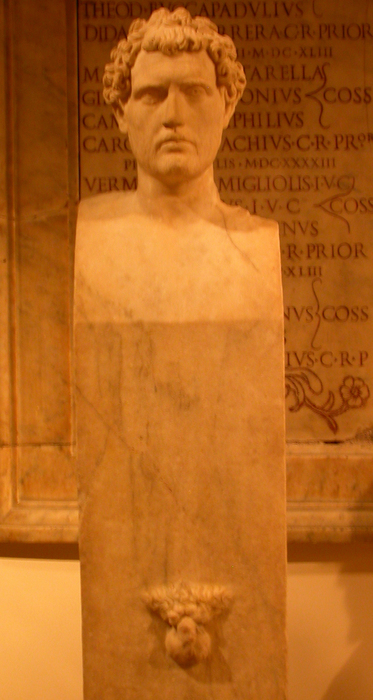
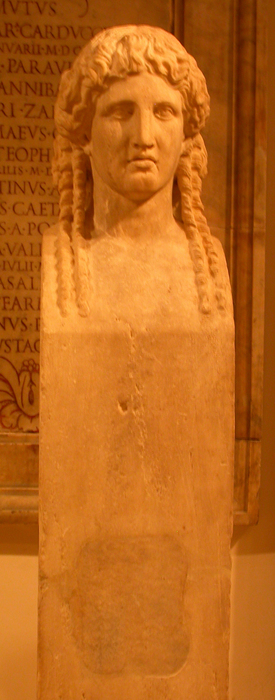
The Roman museums are littered with these busts on rectangular bases. I never took much notice of them until I saw the one on the left. They are herma, ancient icons of Hermes, from the days when he was the phallic god of fertility, roads, and borders. The herma were very stylized, with a bust at the top and male genitalia protruding from the otherwise flat rectangular block below. The bust almost uniformly depicted Hermes as a bearded man with long hair. One occupied nearly every crossroads in ancient Greece. In more rural areas, sometimes the herma skipped the bust, and were simply phalluses.
However, most herma these days look something like the one on the right. Intact genetalia are very rare - and no surprise, since the tradition of removing them seems to be nearly as ancient as the tradition of making them. The genetalia were cracked off of every herma in Athens the night before a great battle in 415 BC. The herma on the right has probably had its bust replaced too, though some of the herma had a female head on one side. The one on the left may be original, but it is just as likely that it has a new head as well.